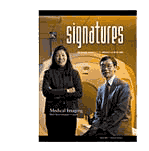A Creative Bent
An extremely technical discipline, engineering is also an extremely
creative one. Engineers are naturally curious about the way things
work. They are equally as passionate about making them work better.
That’s exactly what seniors are challenged to do in capstone
courses throughout the College of Engineering.
For example,
last semester mechanical engineering majors were asked to design and construct
a working prototype of one of four products: a basic ambulatory assistance system;
an innovative musical instrument; an automated circuit board assembly, solder,
and test system; or a human-powered potable water still, which could also be
entered in the 2007 American Society of Mechanical Engineers Student Design Contest.
The
goal of the ambulatory assistance device was to help an able-bodied
individual who had sustained a knee, ankle, or foot injury maintain
as much mobility and independence as possible during the recovery
process. Teams opting to pursue this type of device needed to design
a low-cost, all-weather product that was more sophisticated than
crutches, more compact than a golf cart, and more flexible than a
wheelchair.
|
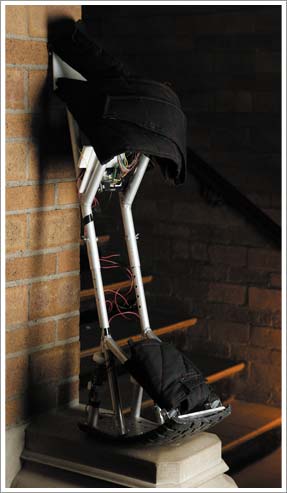 |
<< A basic ambulatory
assistance system was developed by the Leg O’Maniacs — Vanessa
Carr, Kim Dueffert, Mike Hennig, Eileen Jackson, Steve Klein, and
Dan Turnure. |
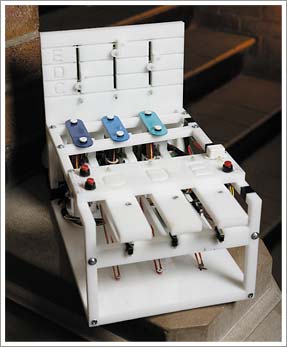 |
<< Gordon Farmer, Mike Johnson, Eric Laumann,
Bryan Marek, and Phil Moss developed the Mini Mozart, an interactive
keyboard for 3- to 6-year old children. |
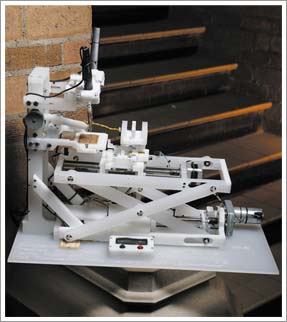 |
<< According to team members Nicholas Frohmader,
Jeff Lammermeier, Mike Lavery, Dave Rowinski, and Brad Shervheim, SolderBaat
grabs a circuit element, transports it to a board, and makes a precise
soldered connection, while providing the operator feedback throughout
the process. |
One of the challenges for
teams designing an innovative musical instrument was to integrate
their musical interests with their engineering skills. The “product” needed
to be able to play a range of tones (or notes) both manually and
in an automated fashion, similar to a player piano. In their final
presentations, some of the teams suggested that their devices could
help teach children to read and play music or provide motor skill
rehabilitation (enhance dexterity) for disabled patients.
Falling under the category of automated fabrication and robotic-enhanced devices,
students could also choose to design a device that would take a component from
a cartridge, position it on a circuit board, and solder it in place. The device
would then test the integrity of the final board and display the state of the
board to the operator.
The fourth product involved the creation of a human-powered water distillation
system that could be used by disaster victims, the military, and developing countries
where water supplies might be suspect. While design parameters included that
the final product needed to be compact, easily transported, durable, and easy
to operate, the most important aspect of the device was that it could boil, distill,
and supply potable water to the user, who would power the device.
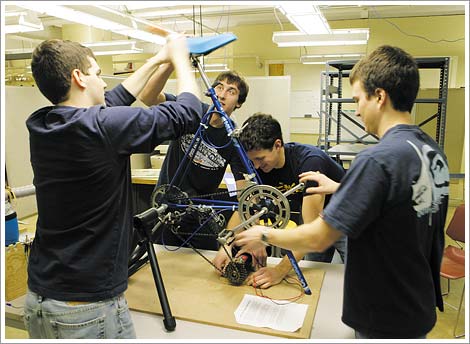
After a few minor adjustments, Team InnovationNDistallation — Dan
Driscoll, Michael Giordano, Kevin Hederman, and Todd Ptacek — plans
to enter their emergency water recovery system in the 2007 ASME Design
Contest.
|
|

